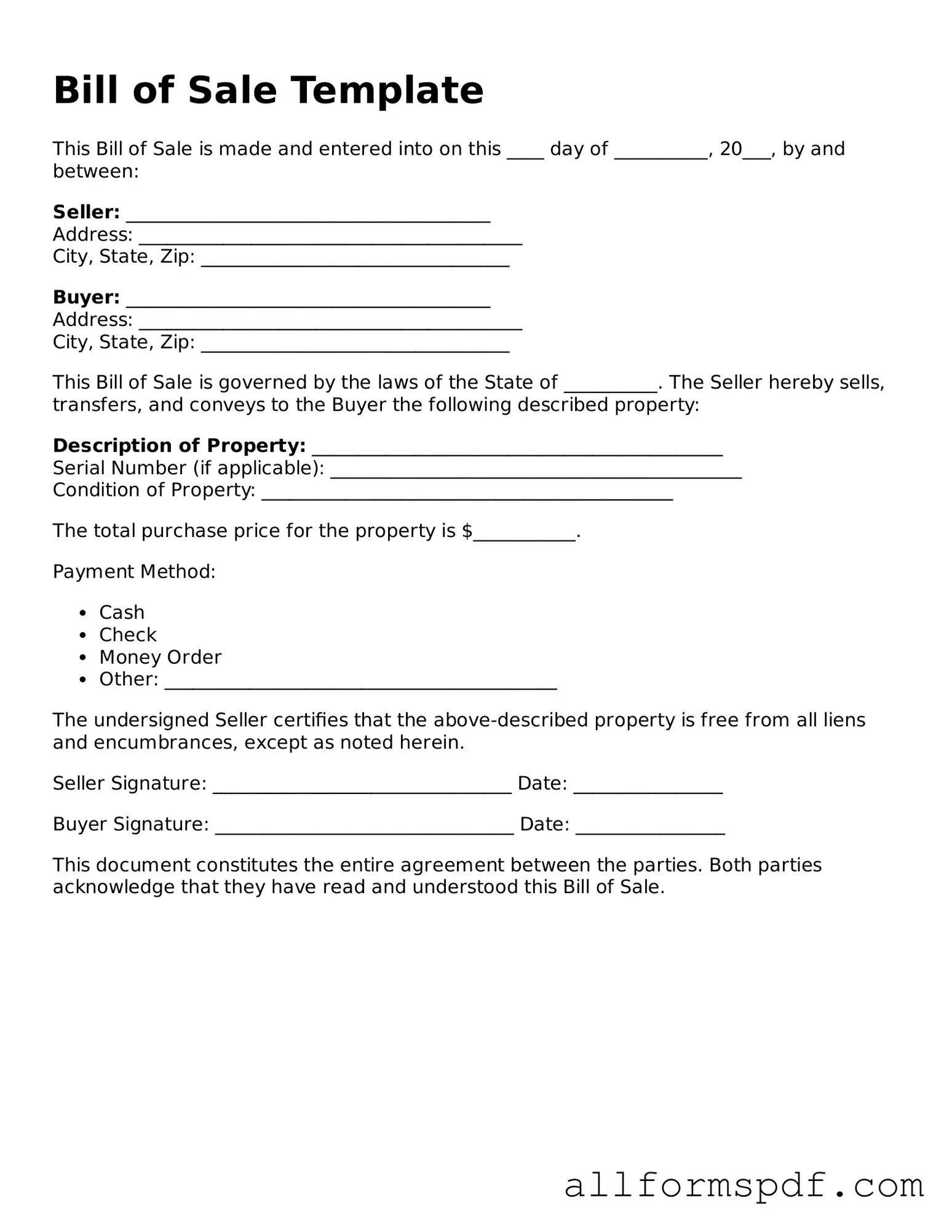When filling out a Bill of Sale form, people often overlook important details that can lead to complications later on. One common mistake is not providing accurate descriptions of the item being sold. A vague description can create confusion and disputes. For instance, instead of simply stating "car," it’s essential to include the make, model, year, and Vehicle Identification Number (VIN). This clarity helps protect both the buyer and the seller.
Another frequent error is neglecting to include the purchase price. This might seem minor, but omitting this information can lead to misunderstandings about the transaction. Buyers and sellers should always agree on a price before completing the form. Including the price ensures that both parties are on the same page and can prevent future disagreements.
People sometimes forget to sign the Bill of Sale. A signature is a critical part of the document, as it signifies that both parties agree to the terms outlined in the sale. Without signatures, the form may not hold up in legal situations. It’s advisable to double-check that both the buyer and seller have signed before finalizing the transaction.
Additionally, failing to include the date of the transaction is another mistake that can cause issues down the line. The date serves as a record of when the sale occurred, which can be important for warranty claims or disputes. Always make sure to write the date clearly on the form to avoid any confusion.
Lastly, many people overlook the need for witnesses or notarization, depending on the state’s requirements. Some states may require a Bill of Sale to be notarized or signed in the presence of witnesses to be considered valid. It’s crucial to check the specific laws in your state to ensure that the document meets all necessary legal standards.
